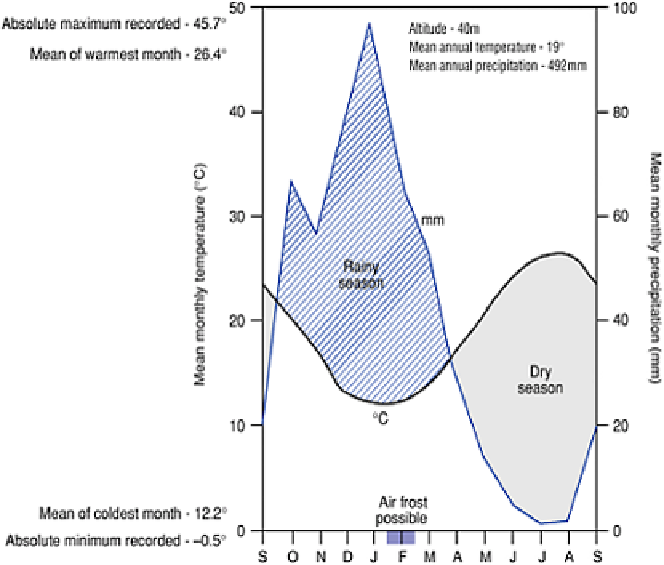Environmental Engineering Reference
In-Depth Information
with weathering during the winter months will be leaching, the removal of weathered
products (cations and anions) and any free calcium carbonate (decalcification) from the
soil profile. The rates of soil formation and thickening vary considerably between
different rock types. Hard igneous and metamorphic rocks weather slowly, owing to the
restricted
Figure 26.4
Climatic diagram for Heraklion, Crete, after the
conventions of Walter and Lieth (1967).
Source: After Rackham and Moody (1996).
length of the moist season and the generally low precipitation totals; in such situations
there is usually a sharp and clear interface between solum and rock (i.e. the profiles have
no C horizon). On softer rocks (e.g. chalks and marls) weathering proceeds fast enough to
give a deeper profile, with fragments of rock and stones in a C horizon.
In addition to the leaching of ions from the soil, winter precipitation causes the
leaching of clay and silt particles from the A into the B horizon to give a clay-enriched or
textural Bt horizon. This is very evident in the field because of the clay and silt coatings
(cutans) on stones and soil structural units, giving typically prismatic structures in the
subsoil. The process is referred to as
argillation
.
The results of weathering and leaching in the winter months are thus the dissolution of
the parent rock, the formation of a Bt horizon, and the production of secondary

